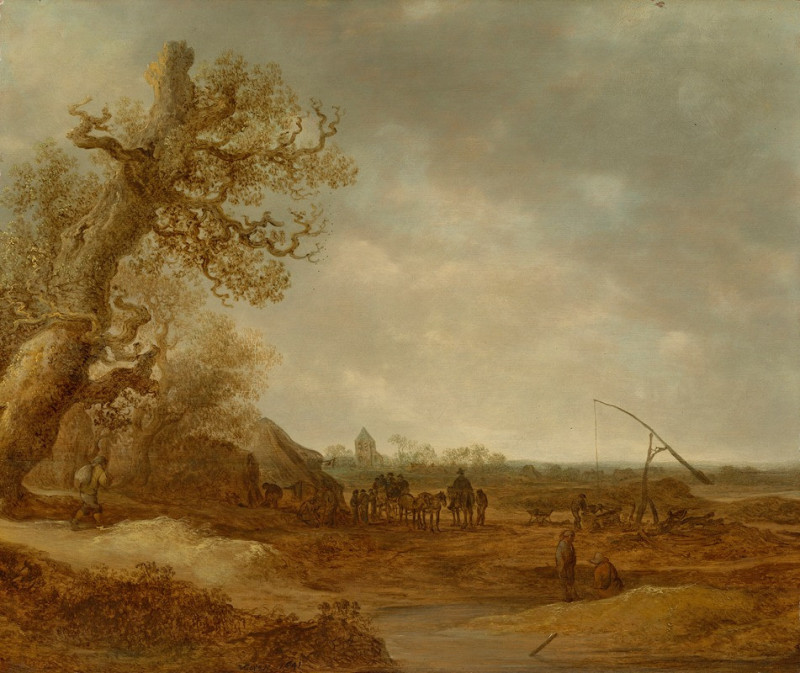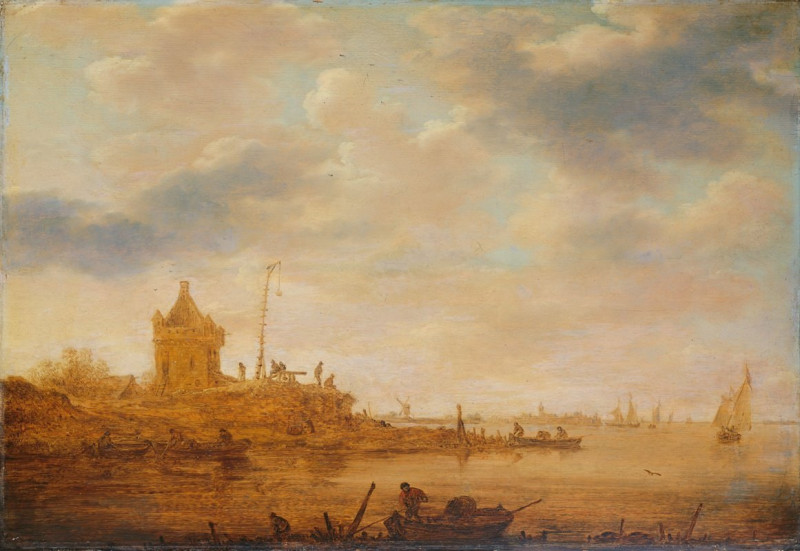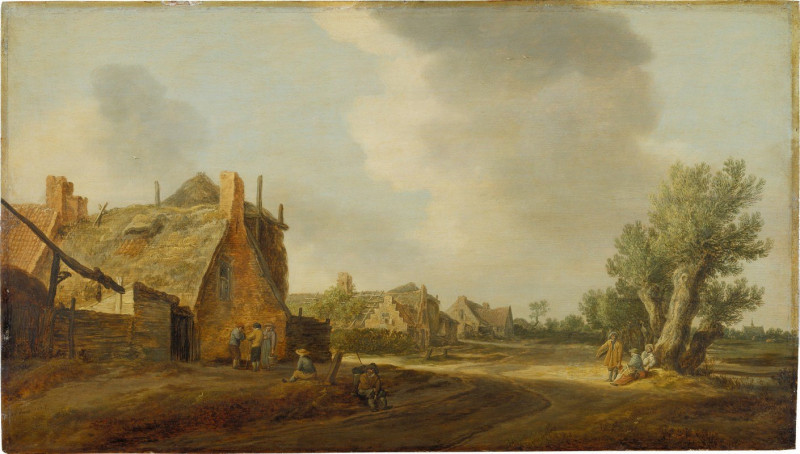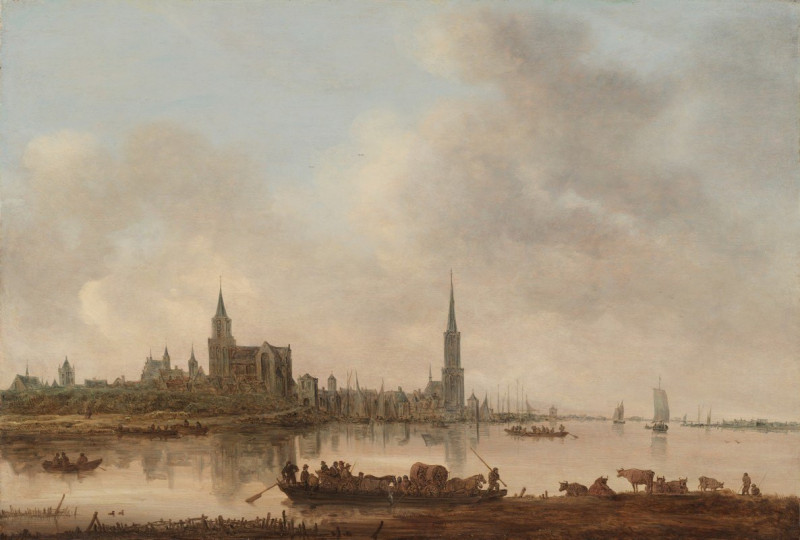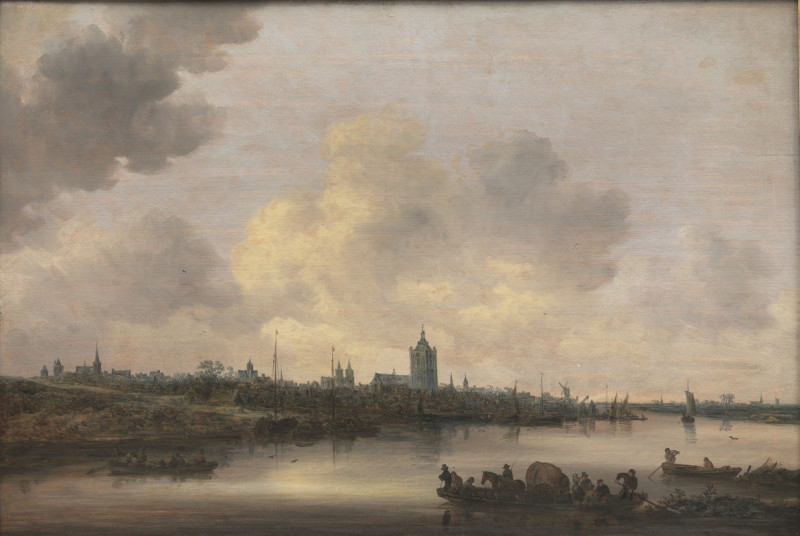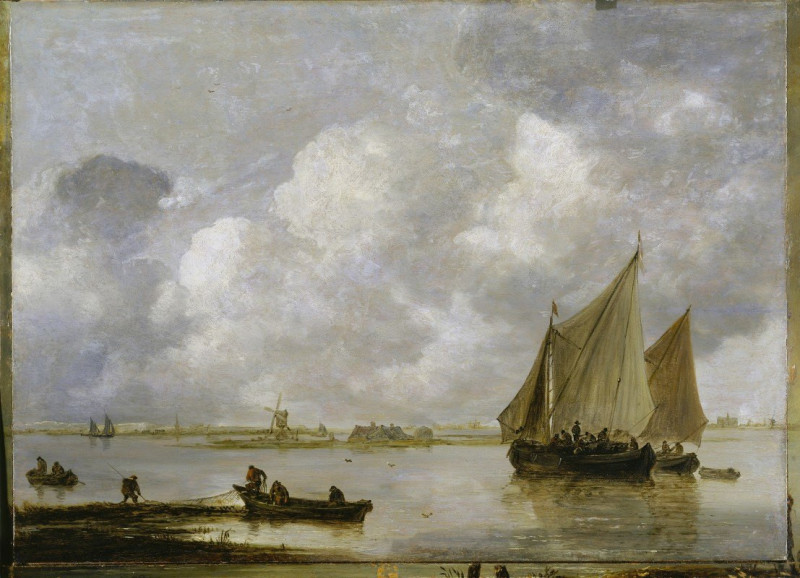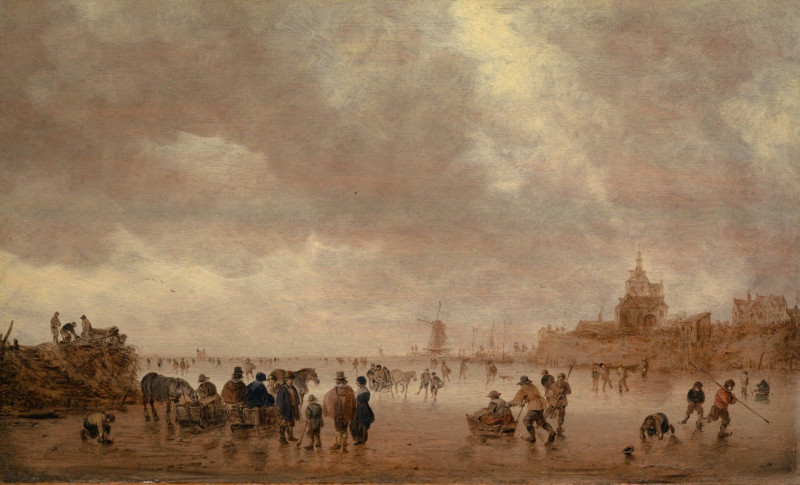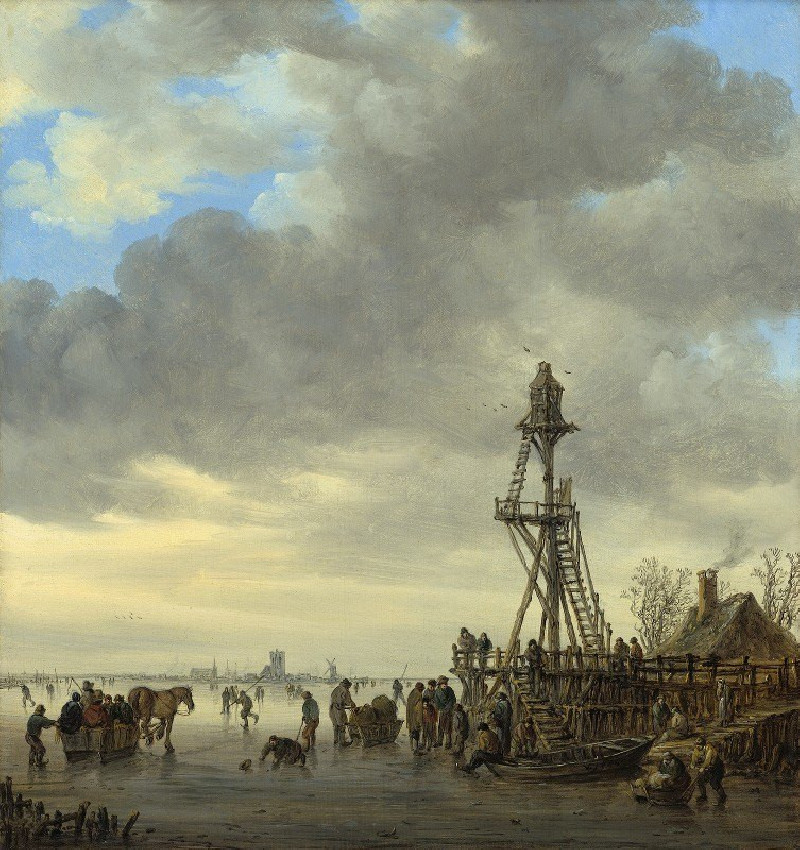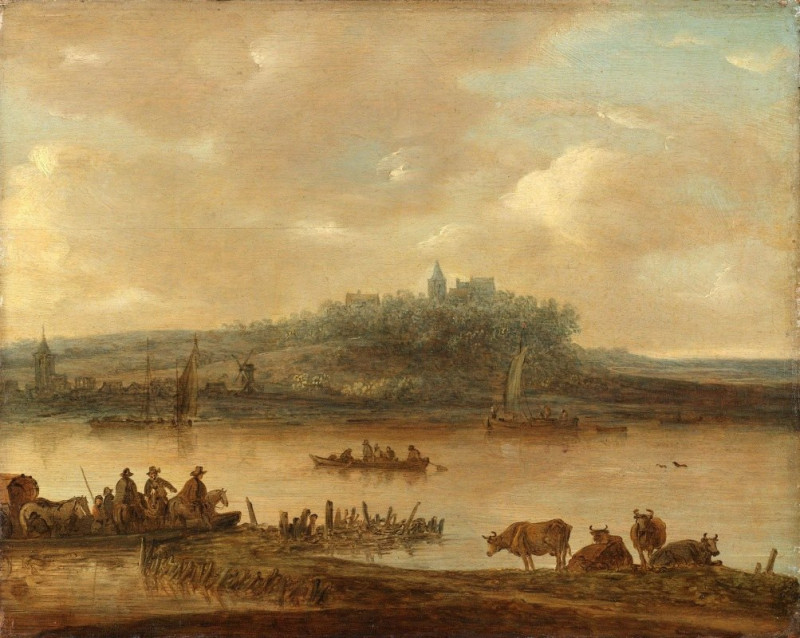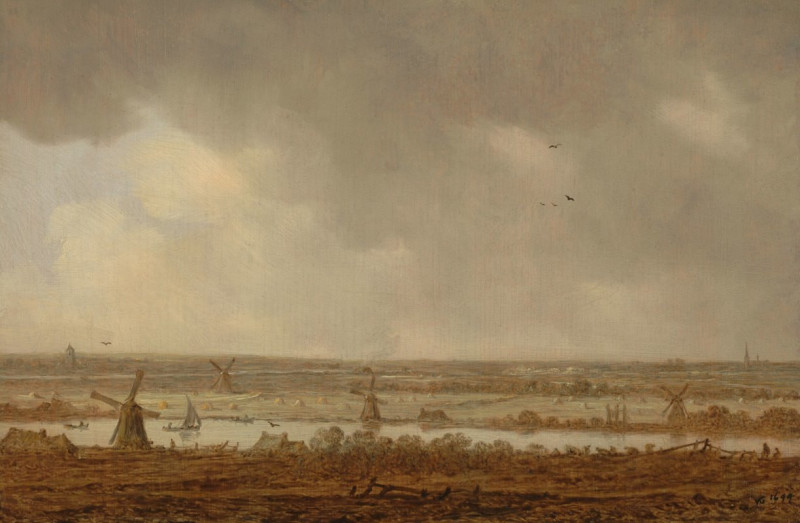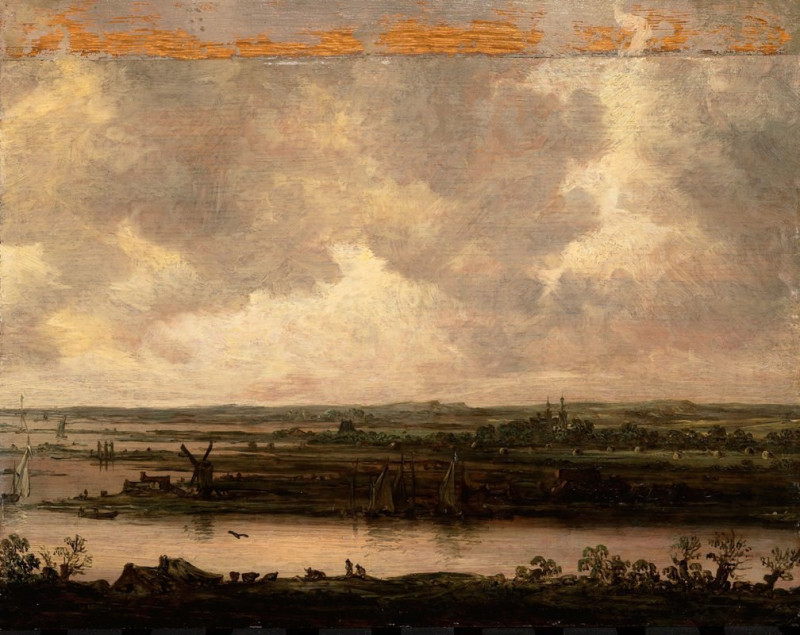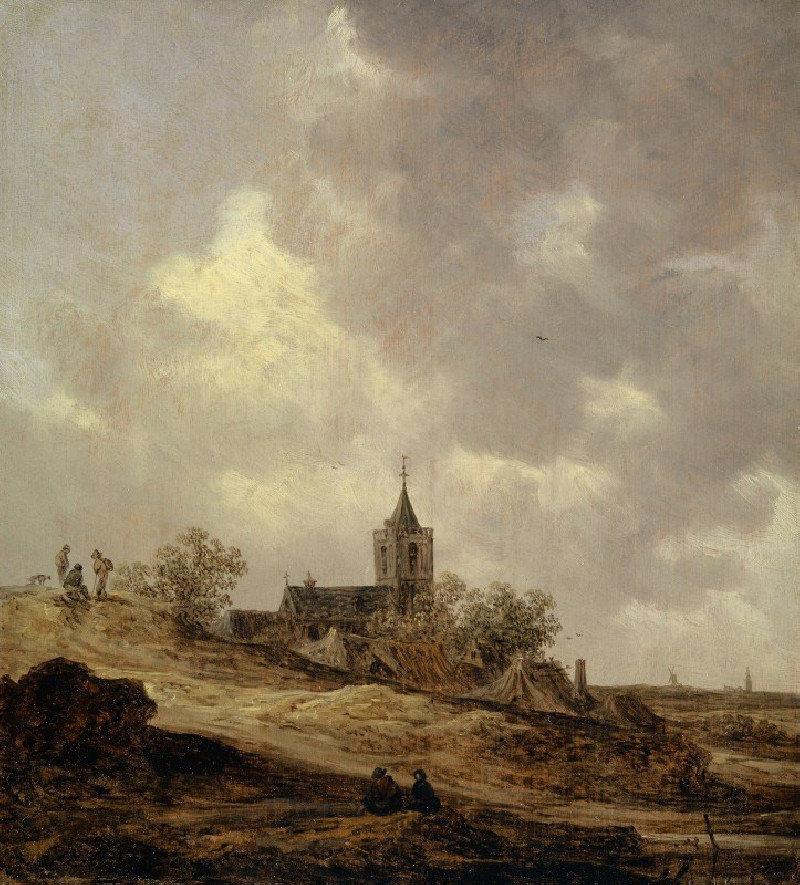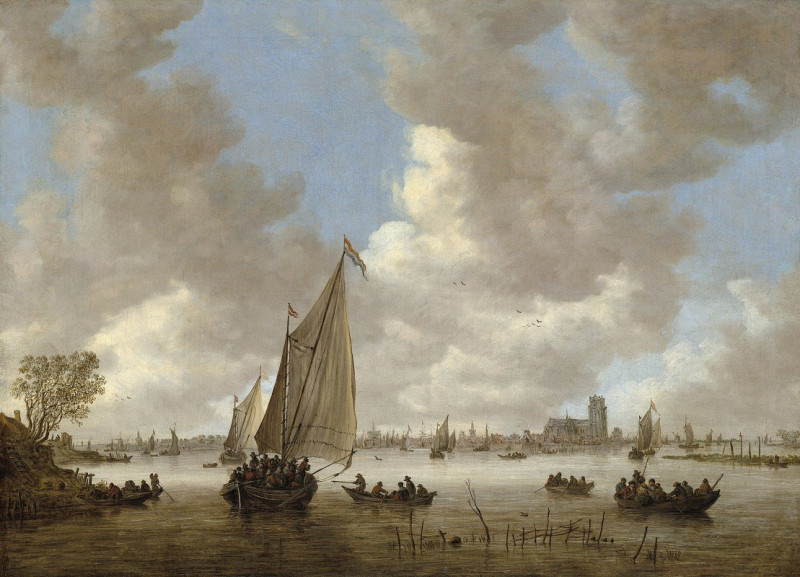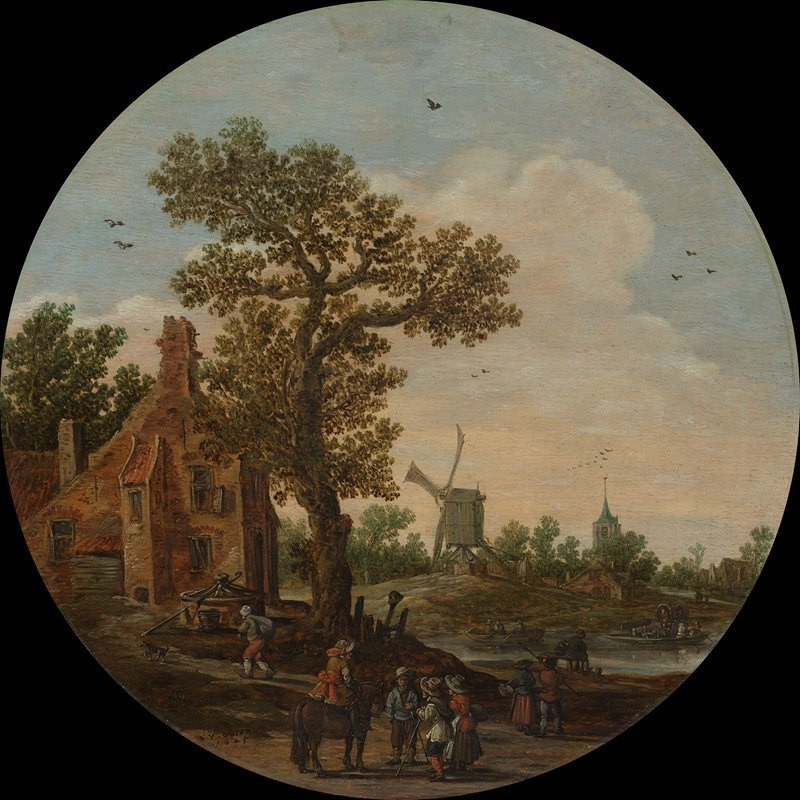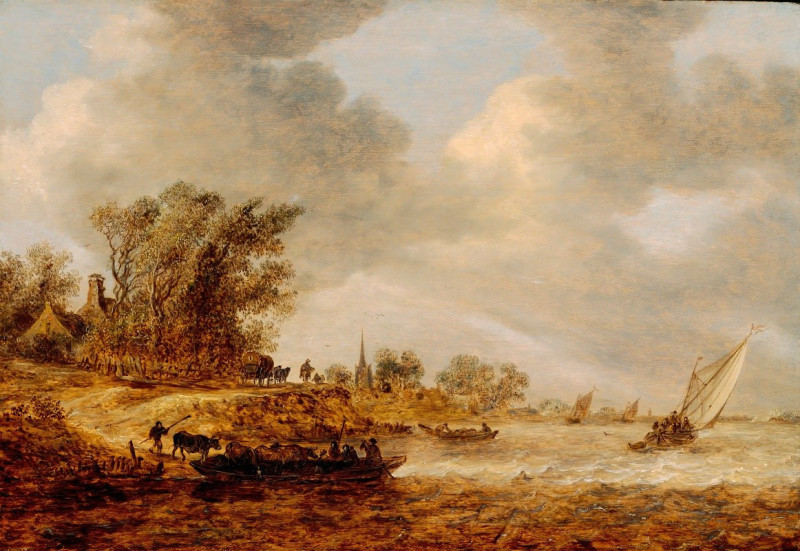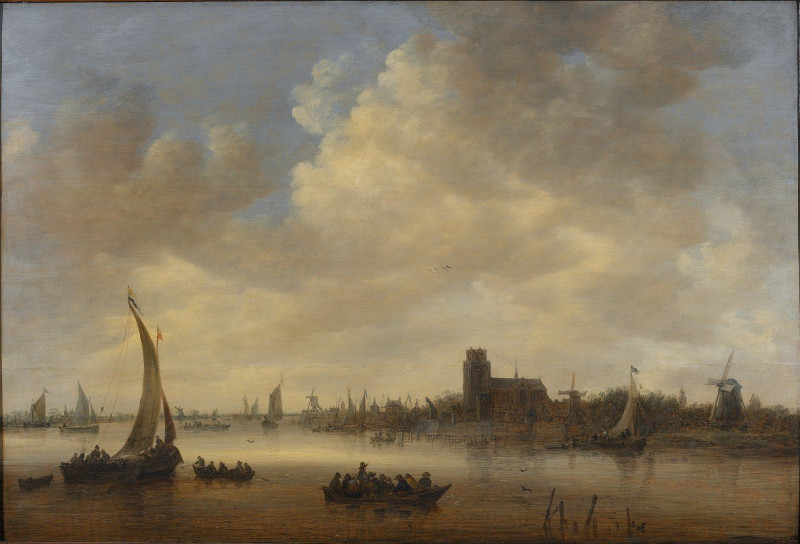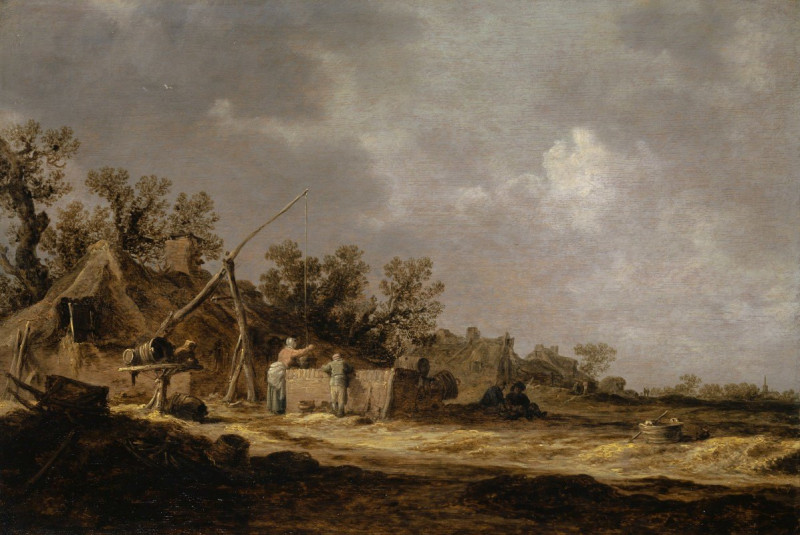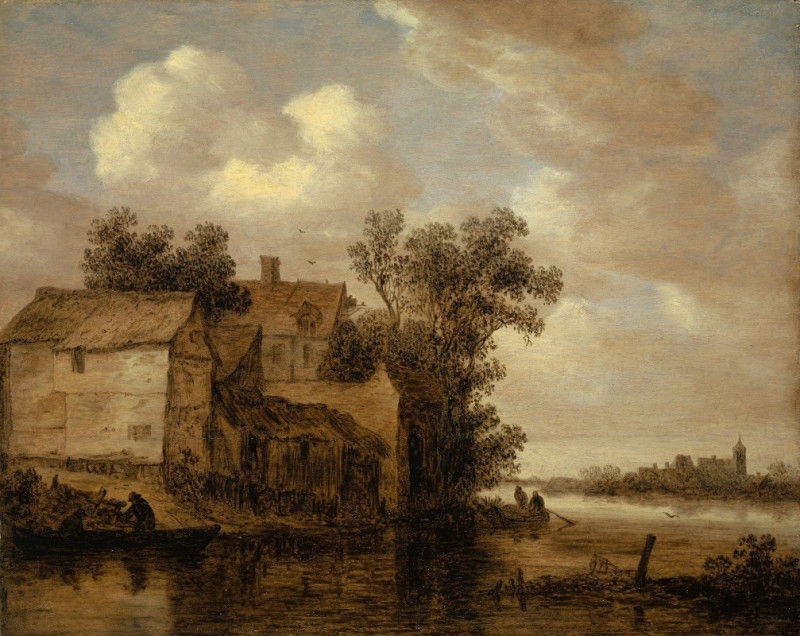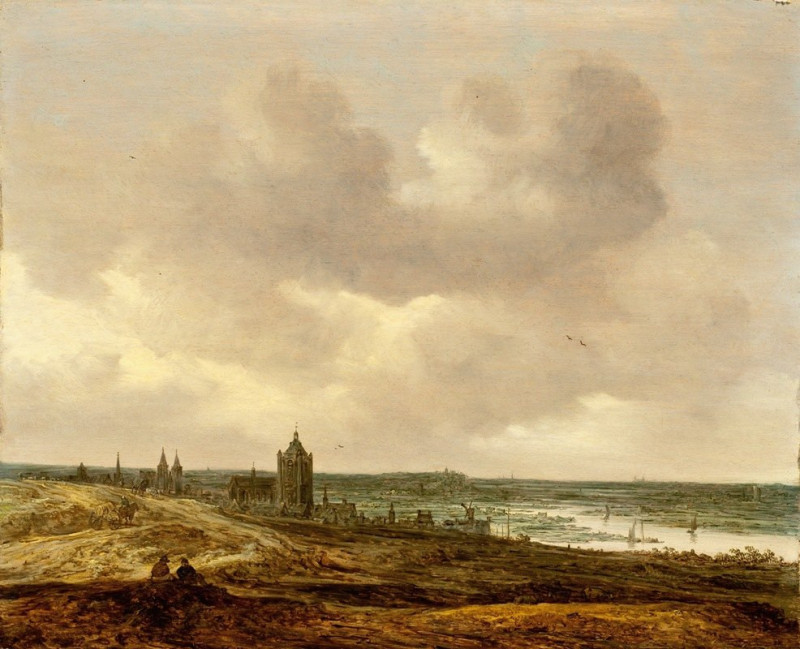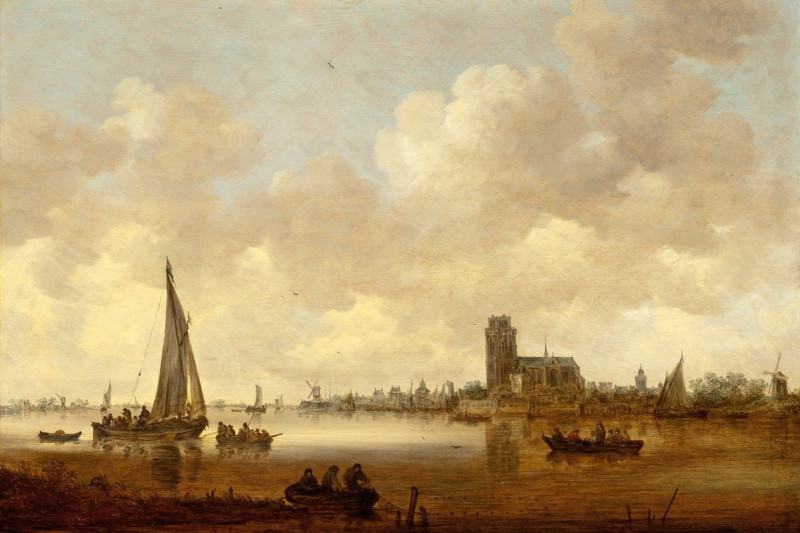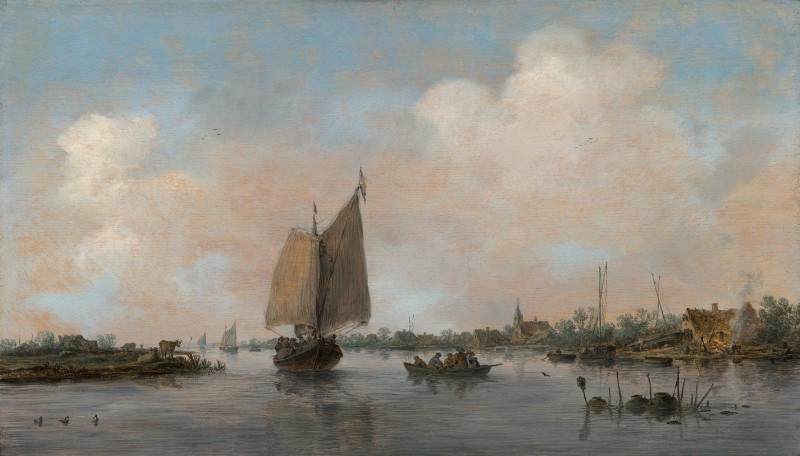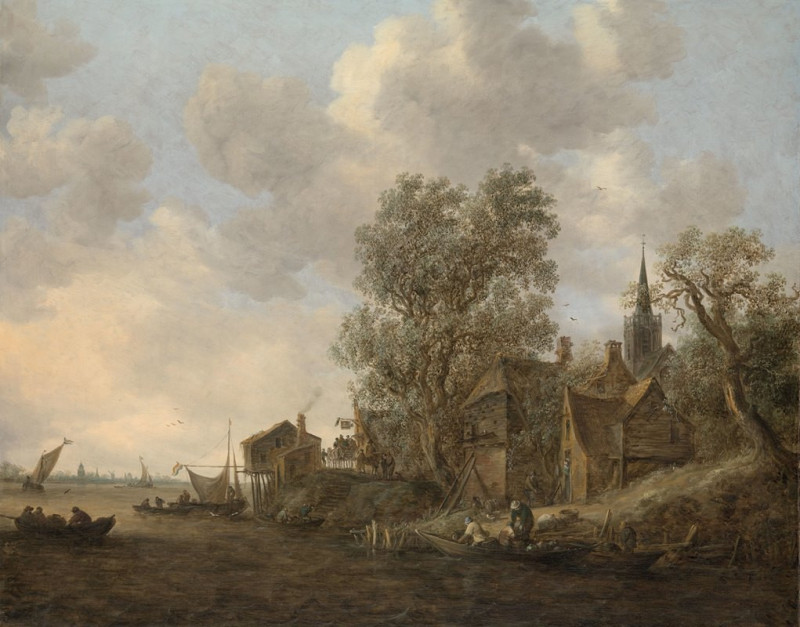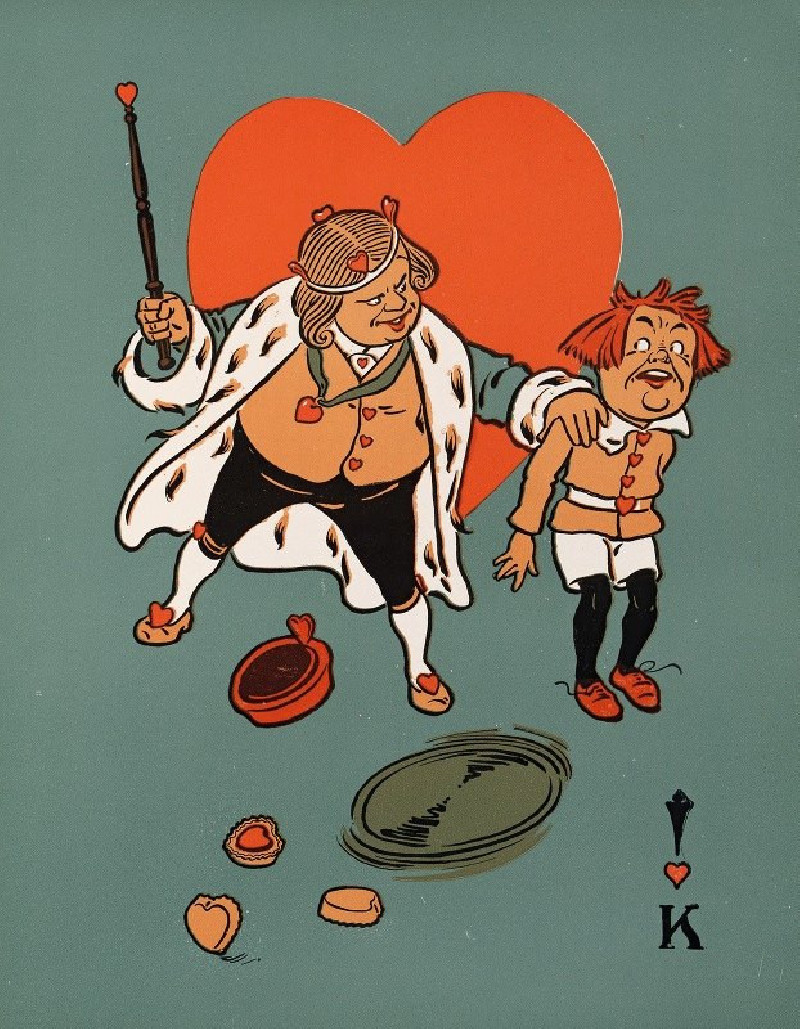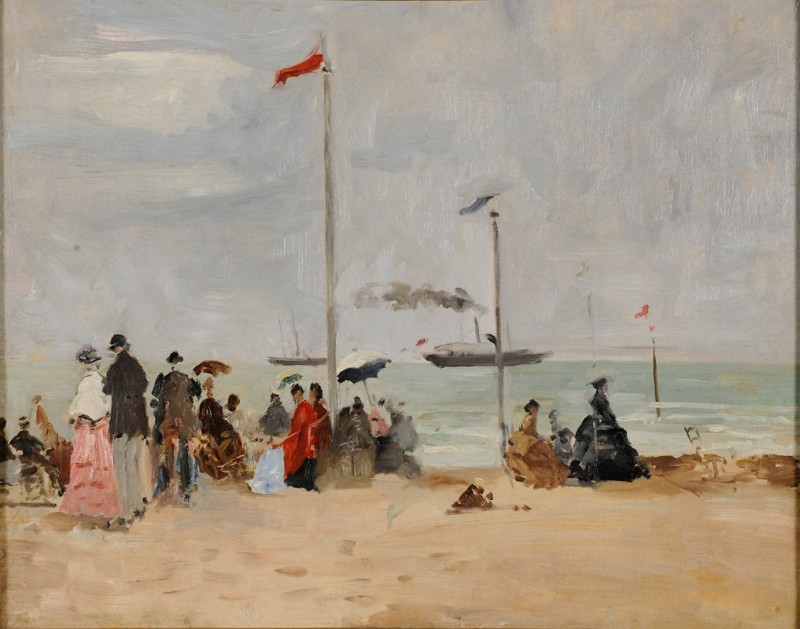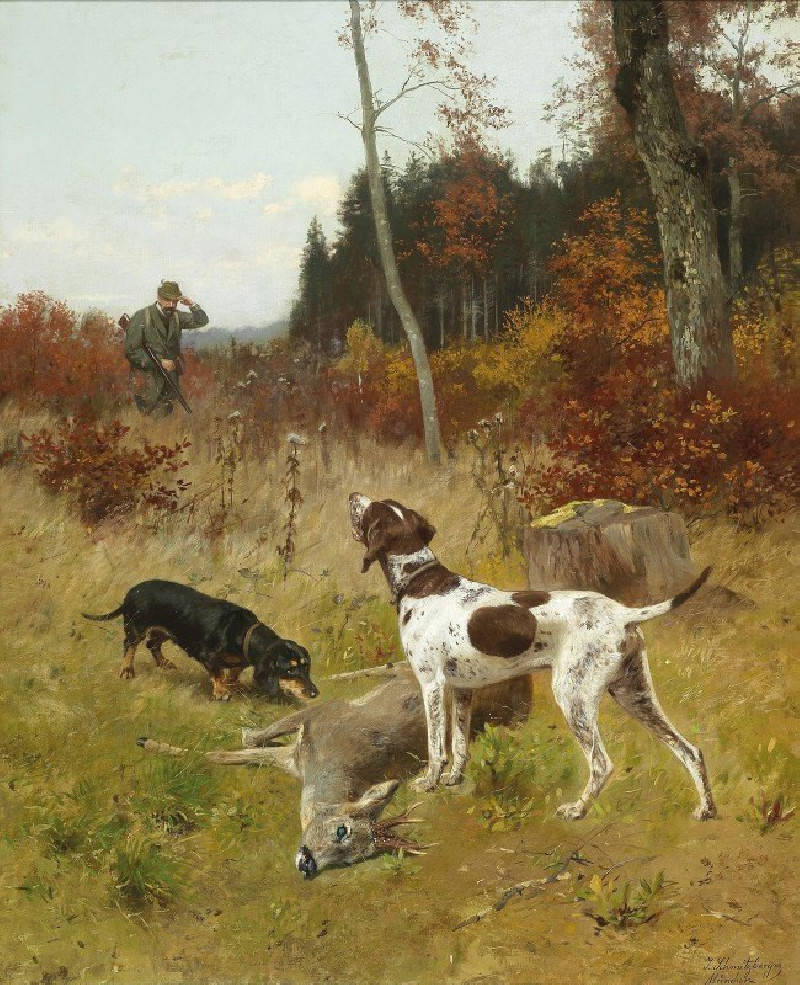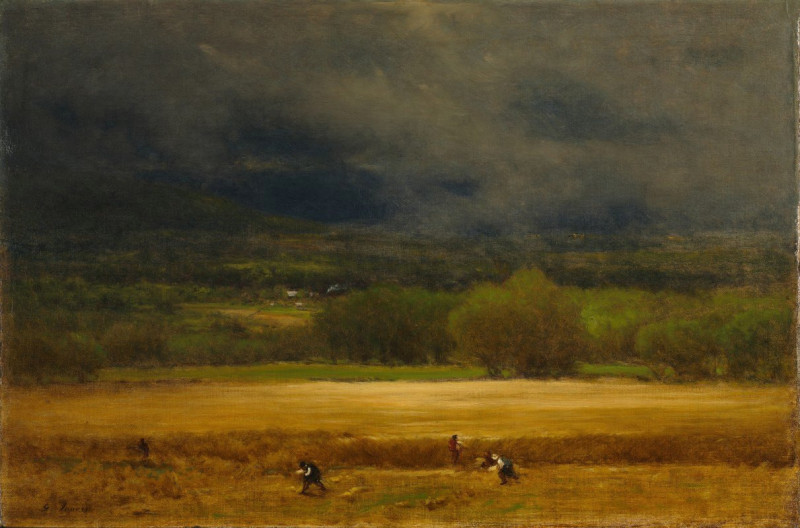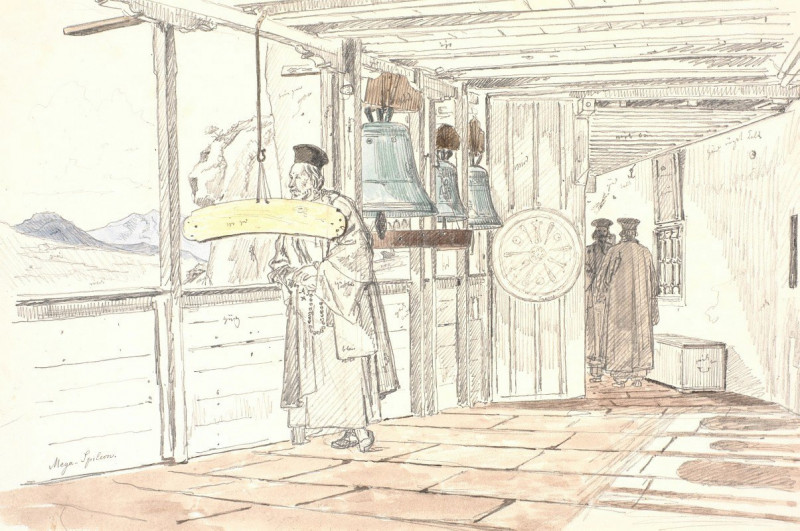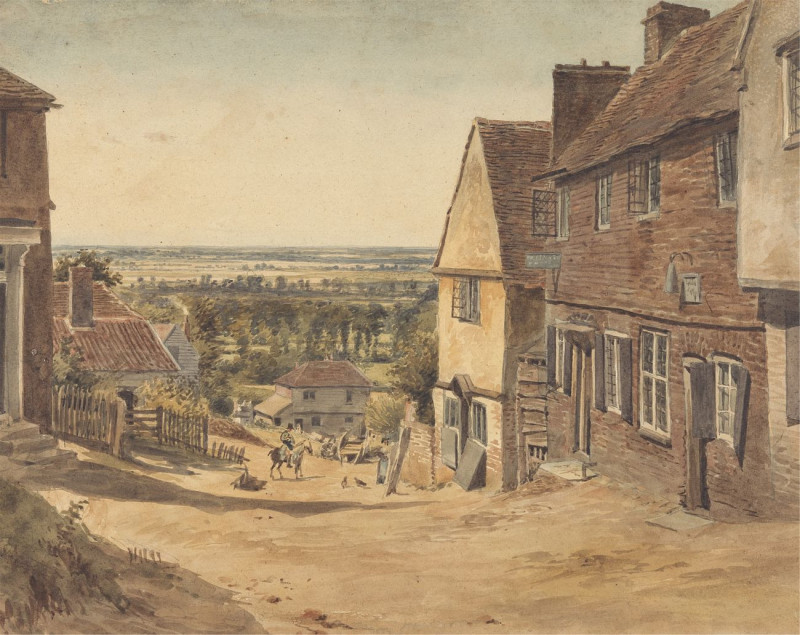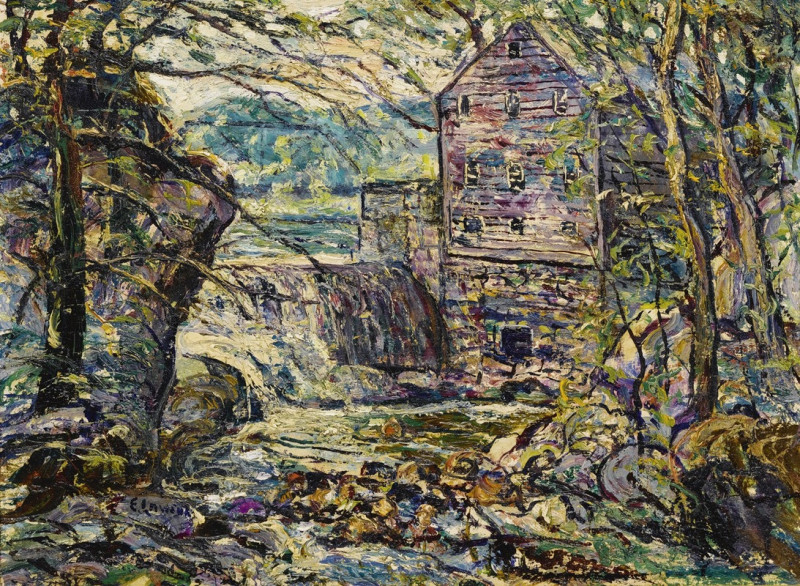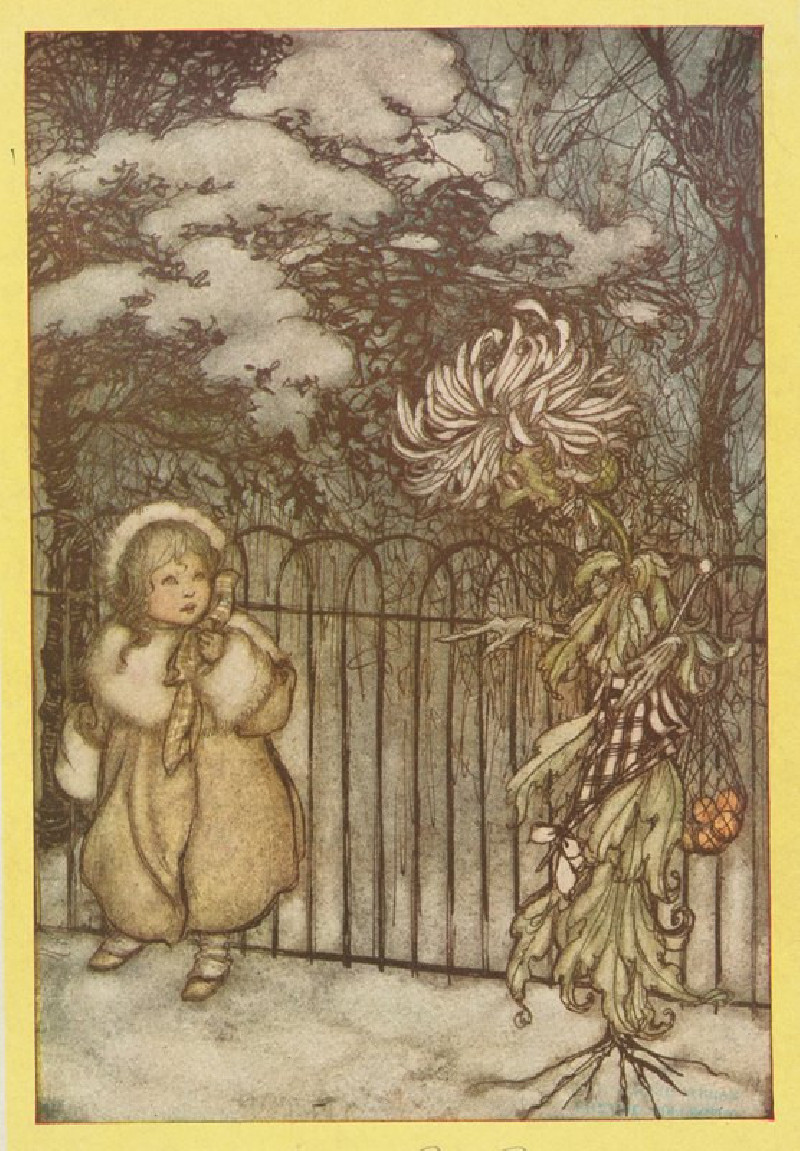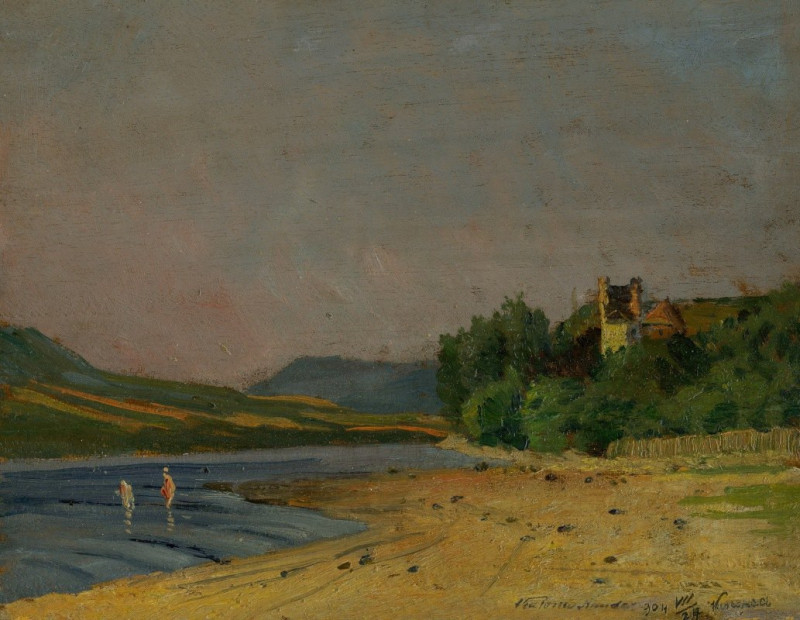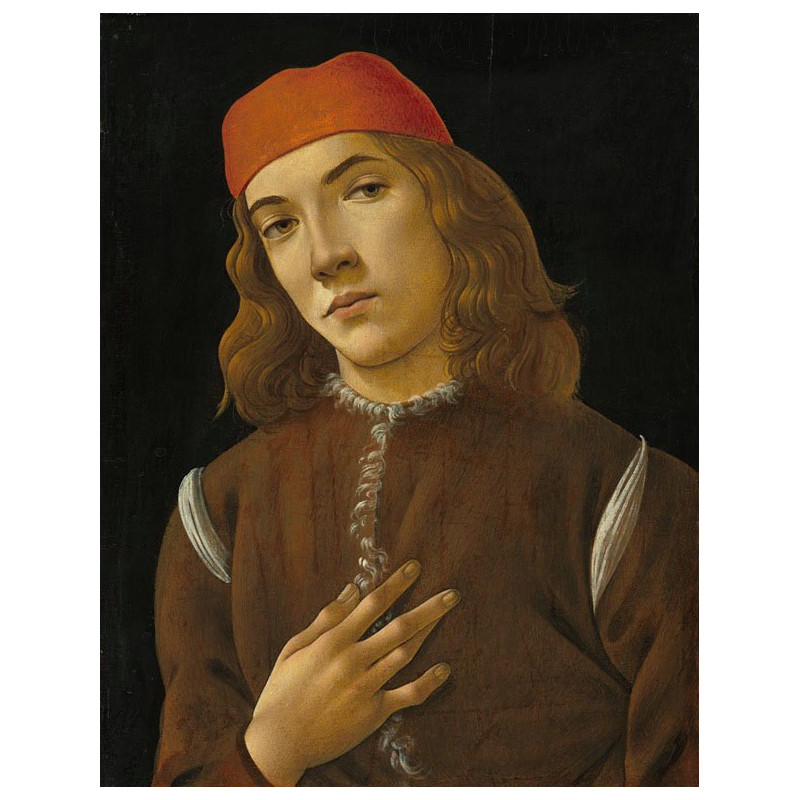A dune landscape with figures (1641)
Technique: Giclée quality print
Recommended by our customers
More about this artwork
Jan van Goyen’s exquisite painting, "A Dune Landscape with Figures," rendered in 1641, offers a captivating glimpse into the serene Dutch landscapes of the 17th century. The work exhibits van Goyen’s masterful use of a muted palette to evoke the vast, tranquil expanses typical of his landscapes. This painting features an expansive view of a dune landscape, characterized by its subtle earth tones and a broad, cloud-filled sky that conveys both timelessness and a sense of the moment.In the foreground, a gnarled and twisted tree anchors the scene, its detailed bark and intricate branches drawing the eye and providing a striking contrast to the soft backgrounds. Below this tree, the land dips into a valley where various figures enact a seemingly mundane yet pictorially rich series of activities. A group of travelers on horseback and foot cluster near the center, engaged in conversation or pausing from their journey. Toward the right, a fisherman attends to his net, a common livelihood that connects the scene to the everyday lives of the local population.The horizon is delicately lined with faint architectural structures, possibly a church or village homes, which nestle subtly into the backdrop, suggestive of the human presence and habitation that dots the landscape. The piece is finely balanced, with human activity and natural features co-existing in harmonious proportion. This painting not only represents a specific moment and locale but also evokes the universal tranquility and beauty of the natural world."A Dune Landscape with Figures" stands out as a prime example of Jan van Goyen's skill in creating atmosphere and depth with restrained color and form.

